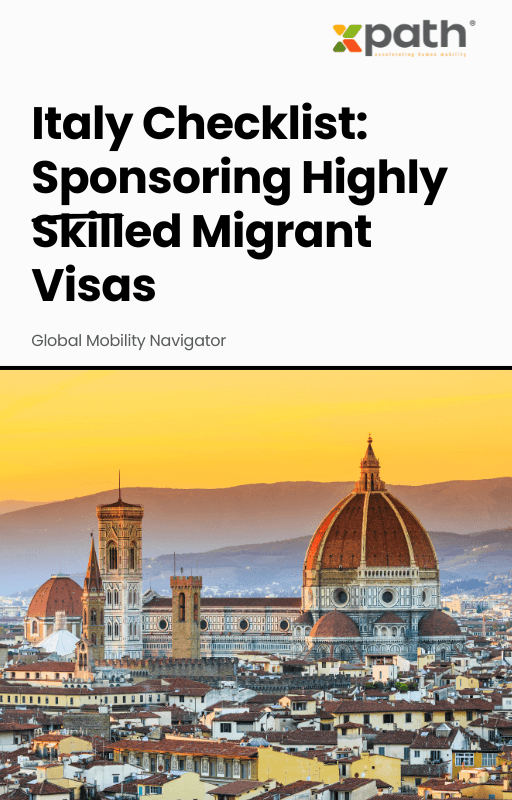Italy Checklist: Sponsoring Highly Skilled Migrant Visas
Grab a copy of a guide to international employee relocation
View E-bookEmployees who work abroad have a large carbon footprint. What can businesses do to create a more long-term mobility strategy?
Global Mobility is likely one of HR’s most carbon-intensive activities. Companies face daunting obstacles when it comes to deploying talent globally in a sustainable manner. It does, however, have the potential to make a significant contribution to carbon reduction targets.
The issue of sustainability, reduction of carbon footprint, is on the minds of global mobility experts. Within the next three years, 83 percent said they will incorporate sustainability measures into their mobility program.
To generate more sustainable talent mobility, the Global Mobility function can pull a number of levers. These are both strategic and tactical levers. Strategic activities expand the range of possibilities accessible to the company for deploying talent in an innovative and long-term manner.
They want to combine competing priorities including increasing assignee experience, boosting mobility’s diversity, equity, and inclusion (DE&I) track record, and providing more flexibility to create solutions that will profoundly change the face of talent mobilization.
Instead of transporting household goods, companies are giving customers the option of purchasing or renting furniture in the new site. It is expected of relocation companies to assist the assignee in connecting with local second-hand marketplaces and freecycle networks.
Assignees are also encouraged to select low-impact relocation solutions. For example, to eliminate this high-carbon advantage, an allowance equal to the cost of air freight may be paid .
Although it is unrealistic to expect Global Mobility to ground all assignees and terminate overseas assignments, the company can work with Global Mobility to reevaluate the underlying need and value of an assignment. Global Mobility can assist the organization in making better decisions by asking crucial questions such as “can the function be completed remotely” or “can it be filled locally.”
Global Mobility also has a role to play in the development of mobility alternatives that meet the company’s talent demands as well as the personal agendas of its employees.
Offering virtual tasks, for example, that address sustainability, flexibility, and DE&I goals at the same time.
Companies can now give employees who, for a variety of reasons, did not feel that a regular assignment was viable the opportunity to work on an international project with an international team.
Global Mobility faces considerable hurdles in developing the infrastructure that supports remote work and virtual assignments as a talent enablement function. A slew of regulatory, operational, and cultural obstacles must be overcome.
Companies who embrace this form of talent mobilization, on the other hand, discover that they may broaden the opportunity for employees to earn useful experience.
Are you interested in learning more about this topic? Read HR’s role in tackling the climate crisis.
Source: hrzone.com

Italy Checklist: Sponsoring Highly Skilled Migrant Visas
Grab a copy of a guide to international employee relocation
View E-book